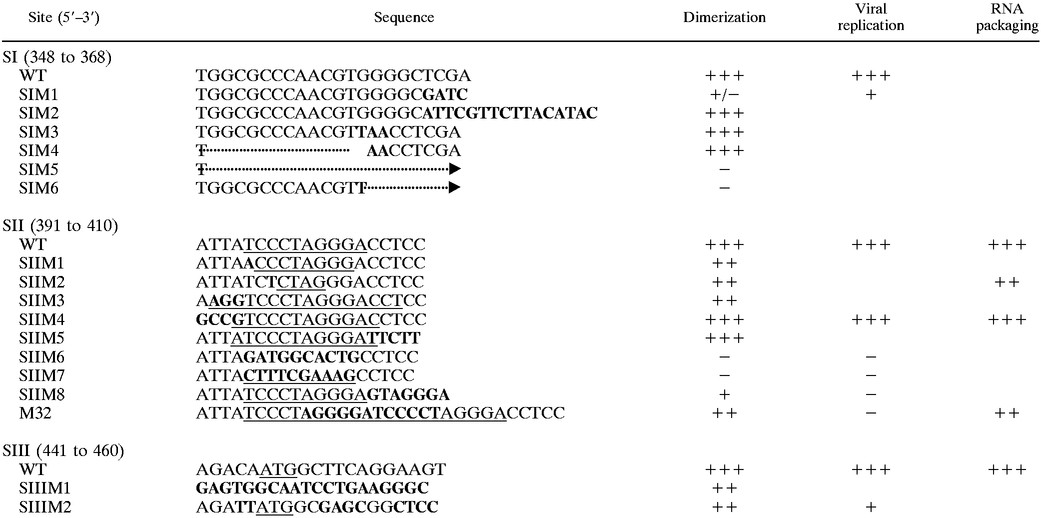TABLE 1.
Illustration of the mutations in SI, SII, and SIII together with their dimerization (in vitro), viral replication, and RNA packaging (in cell culture) propertiesa
 |
The nucleotide sequence of wild-type RNA for SI, SII, and SIII are shown with the corresponding mutant sequences. Nucleotides changed from the wild-type (WT) sequence are shown in bold. In the SI column the dotted line corresponds to deleted nucleotides. In the case of SIM5 and SIM6, the arrows indicate that the nucleotides have been deleted up to the second C in SII. In the SII column, palindromic sequences are underlined. The mutant SIIM8 could potentially form two palindromic structures, either involving 10 complementary nucleotides or a 12-nucleotide palindromic stem with 5 intervening nucleotides, as shown. In the SIII column, the gag start codon (ATG) is underlined. The relative abilities of the RNAs to dimerize in vitro, replicate, and package RNA in cell culture compared with the wild-type are indicated. +, 20 to 40%; ++, 40 to 70%; +++, over 70%; −, no dimerization, replication, or RNA packaging; +/−, dimerization ambiguous.
